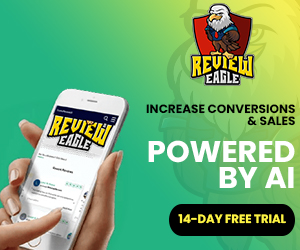Persuasion is crucial. Designing a website that effectively captures and holds the attention of visitors can make all the difference in whether they navigate deeper into your site or quickly click away.
When it comes to website design, there is a delicate balance between functionality and aesthetics. Sure, a visually appealing website may catch the eye, but if it fails to engage the visitor or communicate its message effectively, all that effort will be in vain. This is where the psychology behind website design comes into play. By understanding how people think, perceive, and interact with online content, designers can strategically craft websites that not only look good but also persuade and influence visitors to take desired actions.
In this blog post, we will delve into the fascinating world of website design psychology and explore the key principles that can help decode the secrets behind creating effective websites. We’ll uncover the science behind color choices, the impact of typography on user experience, the psychology of visual hierarchy, and more. So whether you’re a web designer looking to elevate your skills or a business owner seeking to optimize your website’s performance, get ready to dive deep into the art of persuasion in website design.
The Art of Persuasive Calls-to-Action: Encouraging User Engagement
When it comes to website design, one of the most important elements to consider is the call-to-action (CTA). A well-crafted CTA can make all the difference in whether a visitor takes the desired action or simply moves on. But how do you create a persuasive CTA that encourages user engagement?
First and foremost, it’s crucial to understand the psychology behind effective CTAs. People are more likely to take action when they feel a sense of urgency or scarcity. By incorporating words like “limited-time offer” or “exclusive deal,” you can create a sense of urgency that motivates visitors to act quickly.
In addition to creating a sense of urgency, it’s also important to make your CTA visually appealing and easy to find. Use contrasting colors that stand out from the rest of your website’s design, and place your CTA in a prominent location where visitors can easily see it. Remember, if users have to search for your CTA, they’re less likely to engage with it.
Furthermore, consider using persuasive language in your CTAs. Instead of simply saying “Sign up,” try something more compelling like “Join our exclusive community” or “Unlock access now.” By using language that speaks directly to your target audience’s desires and needs, you can increase the likelihood of user engagement.
Lastly, don’t forget about the power of social proof. People are more likely to take action when they see others doing the same. Incorporate testimonials or reviews near your CTAs to build trust and credibility with your visitors.
Building Trust and Credibility Through Design: The Psychology of User Perception
When visitors land on your website, their perception of trustworthiness and credibility is formed within seconds. It’s crucial to understand the psychology behind user perception and design your website accordingly.
One of the key factors that influence user perception is visual design. A clean and professional-looking website instills confidence in visitors, while a cluttered or outdated design can make them question your credibility. Pay attention to details like font choice, spacing, and color scheme to create a visually appealing and trustworthy website.
In addition to visual design, the layout of your website also plays a significant role in user perception. People tend to scan websites in an F-shaped pattern, meaning they focus on the top and left side of the page more than other areas. By placing important information and key messages in these prime locations, you can effectively capture visitors’ attention and convey your message more effectively.
Another important aspect of building trust through design is consistency. Use consistent branding elements throughout your website, such as logos, colors, and typography. Consistency creates a sense of professionalism and reliability, which can help establish trust with your audience.
Lastly, don’t forget about the power of social proof in building trust. Incorporate testimonials, case studies, or client logos on your website to showcase previous successes and build credibility with potential customers.
Mobile Optimization: Adapting Design Principles for Small Screens
In today’s mobile-centric world, it’s essential to optimize your website for mobile devices. With more people accessing the internet through smartphones and tablets than ever before, neglecting mobile optimization can result in lost opportunities for engagement.
When it comes to mobile optimization, one of the most important principles is responsive design. Responsive design ensures that your website adapts seamlessly to different screen sizes and resolutions. This means that no matter what device a visitor is using to access your site, they will have a positive user experience without having to zoom in or scroll horizontally.
In addition to responsive design, it’s also important to consider the loading speed of your mobile website. Mobile users tend to have less patience than desktop users, so optimizing your site for fast loading times is crucial. Compress images, minify code, and reduce the number of HTTP requests to improve your mobile website’s performance.
Furthermore, consider the limited-screen real estate on mobile devices. Prioritize important information and calls-to-action, and make sure they are easily accessible without excessive scrolling. Keep forms short and simple, as typing on a small screen can be cumbersome for users.
Lastly, don’t forget about touch-friendly design. Ensure that buttons and links are large enough to be easily tapped with a finger, and provide ample spacing between interactive elements to prevent accidental clicks.
Testing and Optimization: Using Data to Fine-Tune Design Decisions
Designing a website is not a one-time task; it requires continuous testing and optimization to ensure optimal performance. By using data-driven insights, you can make informed design decisions that lead to better user engagement and conversion rates.
A/B testing is one of the most effective methods for optimizing website design. By creating two versions of a webpage with slight variations in design elements or content placement, you can test which version performs better in terms of user engagement or conversion rates. Use tools like Google Optimize or Optimizely to conduct A/B tests and gather valuable data.
In addition to A/B testing, it’s also important to analyze user behavior through tools like Google Analytics. Track metrics such as bounce rate, time on page, or click-through rate to identify areas where users may be dropping off or experiencing difficulties. Use this data to make improvements and optimize your website accordingly.
Furthermore, don’t underestimate the power of user feedback. Conduct surveys or gather feedback through user testing sessions to gain insights into how visitors perceive and interact with your website. This qualitative data can provide valuable insights that complement quantitative data.
Remember, website design is an ongoing process. By continuously testing, analyzing data, and making informed design decisions, you can create a website that not only looks great but also effectively engages and persuades your target audience.
The AI Web Agency is dedicated to helping our clients grow their business. Growth is the DNA and foundation of our focus in everything we provide to our clients. The AI Web Agency offers marketing services that make our client’s phones ring, their websites fill with visitors, and keeps their existing clients engaged. We deliver this growth both online and offline, to local businesses and national brands. We leverage the power of AI to provide precision personalized content delivered via Email, Web, and Social Media to help businesses grow.









